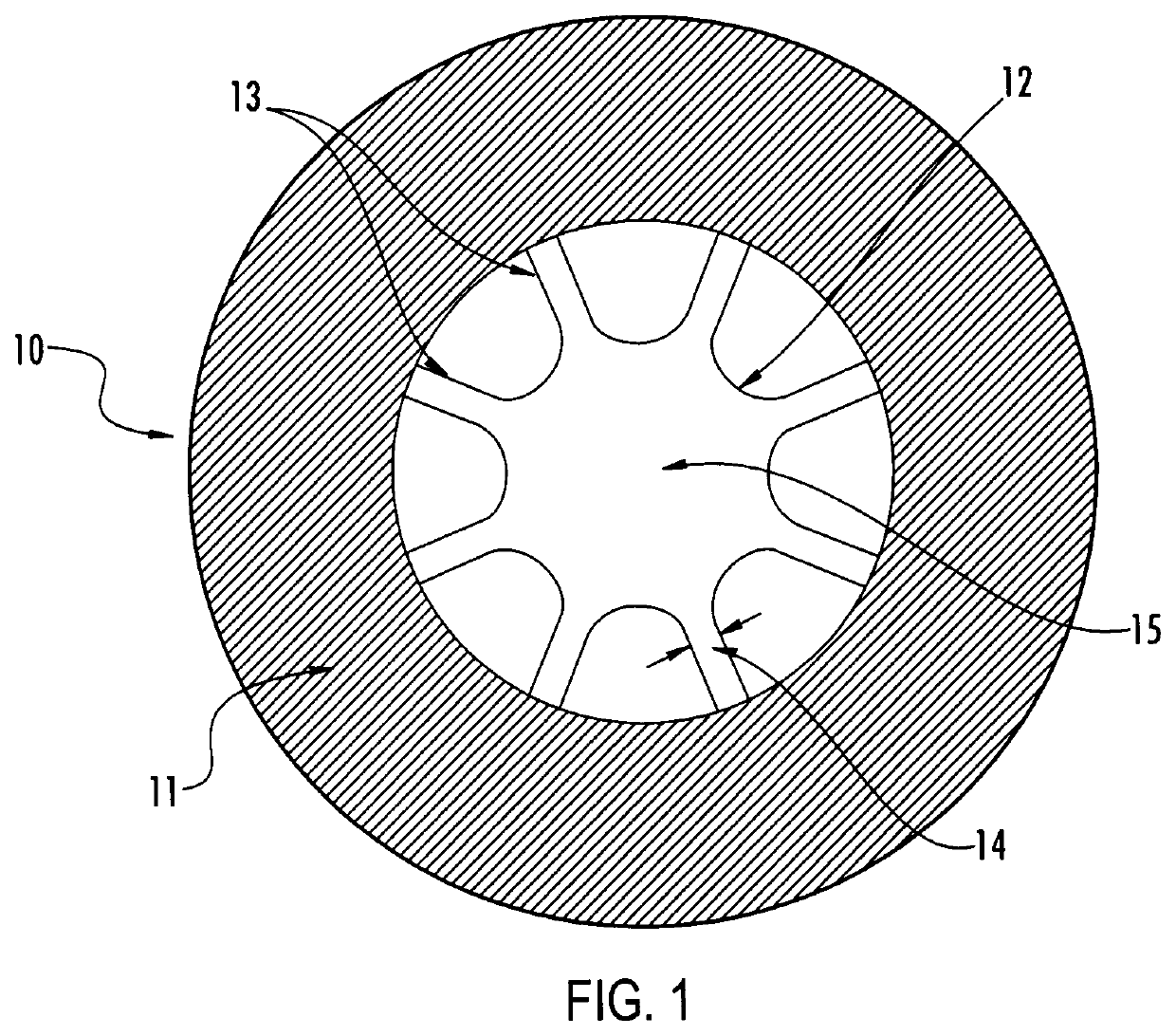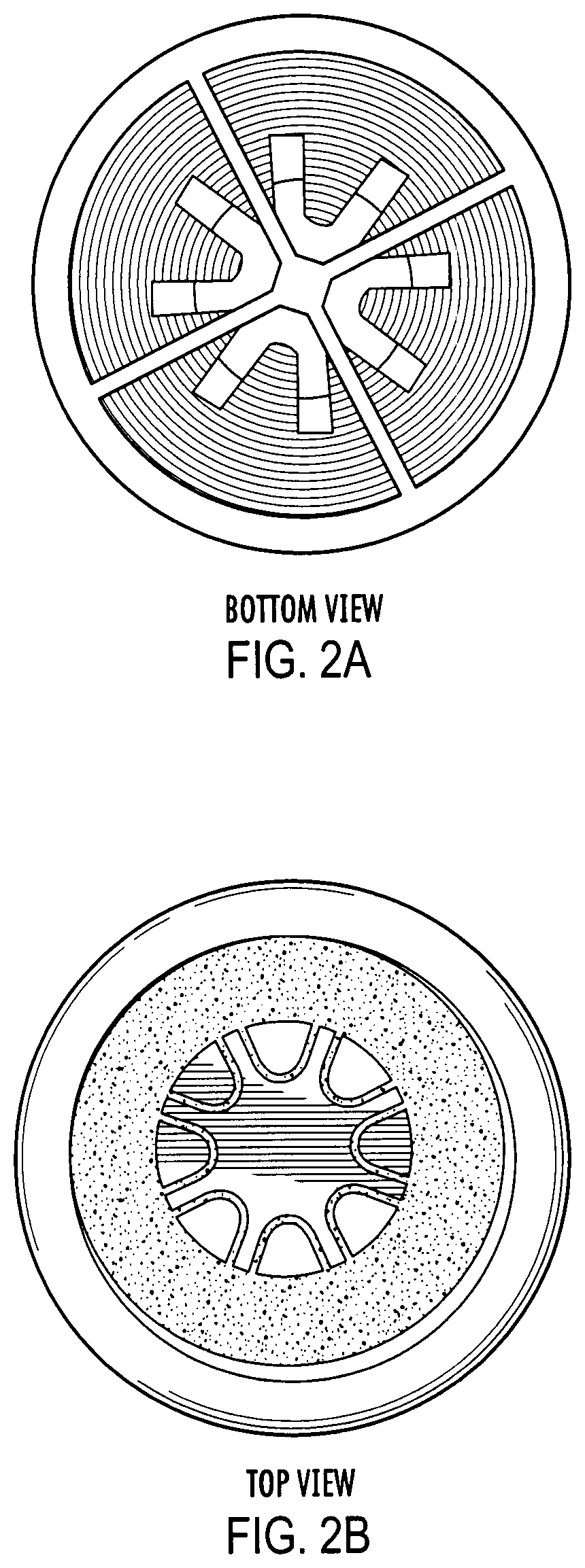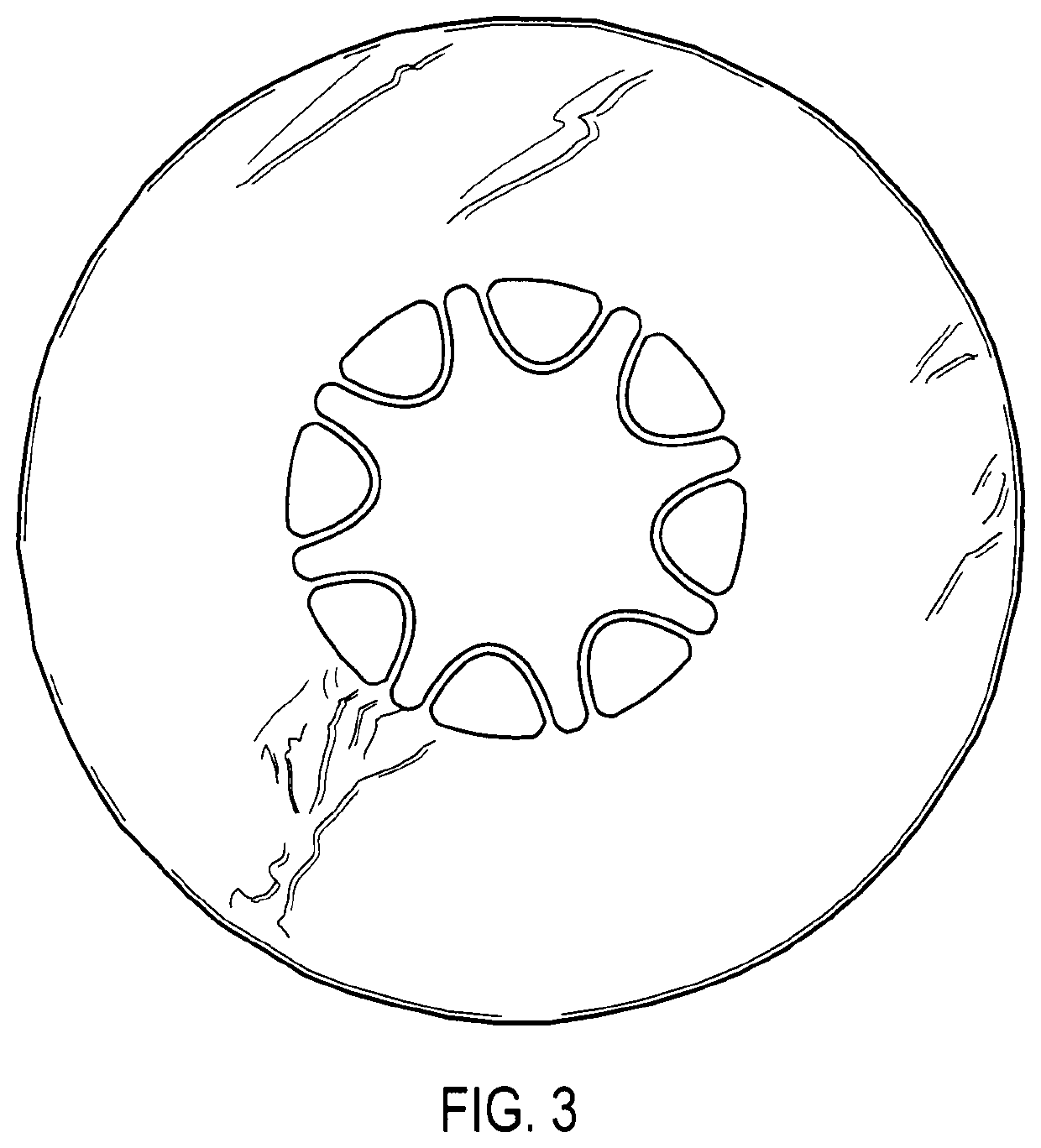Hollow-core fiber with anti-resonant arches and method of manufacturing thereof
a technology of anti-resonant arches and hollow core fibers, which is applied in the direction of manufacturing tools, cladded optical fibres, instruments, etc., can solve the problems of limiting the hc-pbg transmission range to the transparency of glass materials used, unable to achieve coherent reflection, and almost no light-guiding role, so as to achieve the effect of preserving the shape and uniformity of hollow arches, reducing the loss of fiber transmission, and reducing the loss of fiber
- Summary
- Abstract
- Description
- Claims
- Application Information
AI Technical Summary
Benefits of technology
Problems solved by technology
Method used
Image
Examples
example 1
[0027]The hollow-core preform with anti-resonant arches was extruded with the extrusion die showed in FIGS. 2A and 2B. The extruded preform was made of infrared chalcogenide glass, more specifically As2S3 composition. The As2S3 glass is transparent in the infrared up to 6.5 microns. The As2S3 glass billet was 25.1 mm in diameter, 70 mm long, and was inserted in the stainless steel sleeve for extrusion.
[0028]Referring to FIG. 3, a preform was extruded at a draw speed of 0.48 mm / min. The sleeve temperature was 380° C. and the piston speed was fixed at 0.15 mm / min, which resulted in a load of 35-40 kg on the piston. The extruded preform diameter was 16 mm and the length was about 150 mm. As shown in FIG. 3, the arches preserved the shape of the die shown in FIGS. 2A and 2B. The height of the arches was 1.3 mm and the wall thickness was 0.18 mm, which was thinner than the gap of 0.449 mm in the die. The hollow core diameter was approximately 4.8 mm. The hollow-core preform dimensions we...
example 2
[0029]Example 2 relates to a design of the hollow-core fiber with 8 anti-resonant arches for the transmission of CO2 laser light at 10.6 microns. The fiber parameters used for the simulations are: As2S3 glass, a hollow core diameter of 0.185 mm, an anti-resonant arch wall thickness of 3.7 microns, and a gap between the arches of 21.5 microns. FIG. 4 illustrates the calculated intensity profile of the fundamental mode at 10.6 microns. The intensity is clearly reflected by the anti-resonant arches and barely penetrates within the gaps. FIG. 5 illustrates the calculated spectral loss of the fundamental mode of the hollow-core fiber with anti-resonant arches. Two transmission windows are illustrated, one centered around 10 microns wavelength (1st order resonance) and the other centered around 6.5 microns (2nd order resonance). The calculated transmission loss of the fundamental mode at 10.6 microns was 0.138 dB / m. The calculated transmission loss of the hollow-core fiber with anti-reson...
PUM
| Property | Measurement | Unit |
|---|---|---|
| infrared wavelengths | aaaaa | aaaaa |
| long-infrared wavelengths | aaaaa | aaaaa |
| wavelengths | aaaaa | aaaaa |
Abstract
Description
Claims
Application Information
 Login to View More
Login to View More - R&D
- Intellectual Property
- Life Sciences
- Materials
- Tech Scout
- Unparalleled Data Quality
- Higher Quality Content
- 60% Fewer Hallucinations
Browse by: Latest US Patents, China's latest patents, Technical Efficacy Thesaurus, Application Domain, Technology Topic, Popular Technical Reports.
© 2025 PatSnap. All rights reserved.Legal|Privacy policy|Modern Slavery Act Transparency Statement|Sitemap|About US| Contact US: help@patsnap.com



